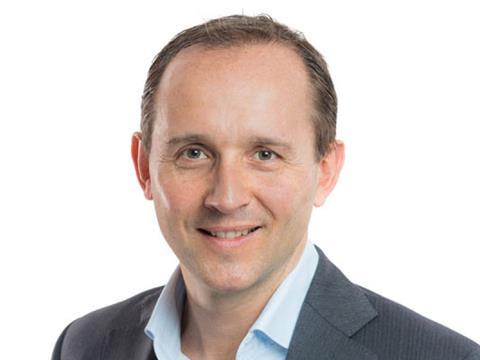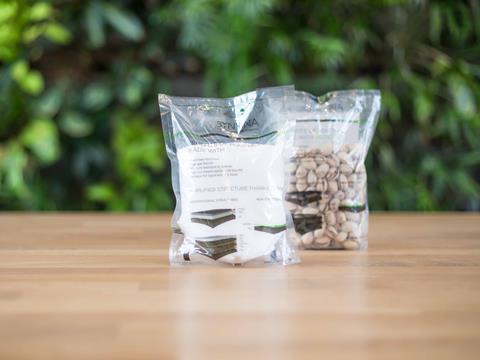
We’ve heard polyethylene furanoate described by some as the ‘polyester of the future’, and chemicals company Avantium is very much championing its environmental benefits. Victoria Hattersley spoke to CEO Tom Van Aken about why this is, and the conversation led on to the specific challenges faced by the chemical industry when it comes to adopting more sustainable production models.
VH: Can you tell me about Avantium’s plants-to-plastics technologies, and the development of PEF as a potential alternative to conventional plastics? What are the unique properties of this material from an environmental standpoint?
TVA: The starting material we use is fructose syrup which today is made from base materials such as corn, wheat or sugar, so we have a wide range of crops we can use as feedstocks. We then have a catalytic technology to convert these sugars into furandicarboxylic acid (FDCA), which is the monomer building block to make PEF.
While PEF is not currently on the market an increasing number of companies are working on making this viable, for one thing because it is 100% biobased. But the other reason so many in retail, food packaging and brand owners are excited about it is that it has outstanding barrier properties (10 times better in terms of oxygen barrier than PET with a CO2 barrier 6 to 10 times better and a water barrier that is twice as good). This means we can start looking into all kinds of applications for bottling, for example, or other packaging where high barrier materials are required. If you look at meat and fish packaging, they are dependent on how much oxygen is migrating to the product so there is tremendous interest in PEF from this sector.
It also has benefits in terms of its thermal properties, with a glass resistant temperature more than 10 degrees higher than PET and a melting temperature 30 degrees lower.
VH: What are the considerations when it comes to commercializing PEF, and what would you say to those who argue that bioplastics are time- and energy-intensive to produce?
TVA: Whenever you bring a new polymer to the market there are going to be a lot of questions about how it recycles and degrades, etc. You have to consider what happens with the polymer if it ends up in nature. PET is suited for recycling but if it ends up in natural systems it stays there for hundreds of years; PEF is different because we know it will degrade in nature much faster than PET does – a matter of years vs. hundreds of years. But we still see biodegradation as more of a backstop because we are positioning PEF as very much a recyclable plastic that is suited for both mechanical and chemical recycling.
In terms of the energy use, once you’ve made PEF the energy required to process it is significantly lower than that required to process PET. Overall, the LCA of PEF is 60-70% lower in terms of carbon footprint. Clearly there are still things we need to address, such as the water required to make the raw materials and so on; that is what we are currently working on so I’m not sitting here saying we know it all. This is a new polymer so there is still work to be done to better understand the end of life fate of products made from PEF.
VH: More generally, can you describe the particular challenges you face within the chemical industry when it comes to the adoption of new production models? For example, why do you think the industry has been slow to adopt biobased feedstocks?
TVA: Everyone is talking about the importance of this but you see very little action being taken. I think this is partly because the industry is happy with the current situation in which the supply chains are working effectively, materials are being produced efficiently so there is very little incentive for them to change.
However, there are two things happening right now that may be changing things. Firstly, the consumer is getting more and more aware of the sustainability issue and is critical of inaction. Particularly in the Western world, young people are more aware of the plastic waste problem and they are putting pressure on brand owners to make changes, who in turn may have to put pressure on the chemical and plastic industry to change.
The second element is governments. So far they have not done a lot to change the situation but in Europe we’re beginning to see it happening, with the EC being very clear about single-use plastics and banning linear use models. So I’m optimistic that we’re just at the start of big changes.

VH: Do you think there has been too much focus in recent years on plastic waste, as opposed to the overall and much more complex problem of climate change? How can we make plastics part of the solution rather than the problem, on both a national and a global scale?
TVA: It’s not something we can control or steer, but I agree that climate change is a much more pressing problem than plastic waste. It’s just that plastic waste is very visible so it stays at the top of people’s minds. I think the whole plastics industry seems very clear now that they want to move to recycling and circularity, but if you look at the products we’re making and how many you can recycle, there is a huge need for virgin raw material to keep this going. There is no way we can close all these recycling loops completely because many products we use today are not suited for recycling. What we are aiming for at Avantium, therefore, is to shift to plant-based, renewable virgin materials, while also shifting to products that are very well recycled.
Both facets of this are required: you need to address upstream as well as downstream to come to a sustainable solution.
VH: How can the kinds of bio-based plastics you are developing at Avantium be produced at the scales required to promote their widespread industry use? For example, is there an issue with the quantities of feedstocks that needs to be addressed?
TVA: It’s a fair question. If you shifted all our bottles to PEF, say brand owners, would there still be agricultural products for the food supply chain? What we want to be clear about is that we are using sugars, NOT the healthy part of the plant. Consider that there is a global effort to reduce the amount of sugar in our diets for health reasons, so as these are used less for food there will be more available for making materials. It’s actually a win-win in that regard. It is only when we start making biofuels on the basis of these feedstocks that we enter into a different debate because for energy production the raw material used is much more intensive.
The fossil industry is taking some of these negative comments about plants for making plastics and using them to its advantage. But I can tell you that using bio-based feedstocks is much more sustainable than using fossil resources. We’re making two billion tonnes of cereals every year so if you look at the numbers, there is enough carbon in the agriculture industry to produce our plastics. What is needed, then, is a more efficient redistribution of the resources we currently have at our disposal.
VH: What can be done to improve the supply of high-quality recycled content in the supply chain, and therefore bring prices for these materials down?
TVA: If you look at polymers you want to recycle, you need to make sure they can be well sorted. We have demonstrated that PEF bottles and films can be sorted and kept apart from other polymers. But the difficulty with quality is that people start adding all kinds of additives to the polymer to get certain types of properties changed – for example an additive that may give the plastic an attractive colour but is no good for recycling. The entire industry needs to work together to avoid contamination of the recycling chain.
The best example of this being carried out is probably in Japan, where PET bottles are all colourless so the recyclate can be used much more easily than the rPET we see in Europe. Governments can play a major role in regulating this and making sure the recycling industry is incentivized in the right way. It’s a strange phenomenon, when you think about it, that virgin PET is cheaper than recycled PET, but as a company it’s hard for us to influence this. It can only be done by governments.
VH: Do you think the problem of packaging waste is compounded by misleading press reports or misunderstandings on the part of consumers regarding terms such as ‘single-use plastics’, ‘biodegradable’, ‘bio-based’ and so on? Again, how can this be addressed in a practical way?
TVA: That’s the million-dollar question, of course. Everyone gets confused by the terminology and I think this is also an area where government, the press and brand owners can work together to help with communication and explain to consumers what the difference is. To be clear, we think recycling is ALWAYS the preferred route over biodegrading, but it has been a minefield of different definitions and again, sadly sometimes it does appear as though the established industry is benefiting from the massive confusion around terms.
But it’s not going to help anyone if we keep the consumer in the dark for much longer. We’re working with other organizations to see how we can deal with this and communicate better. I know this isn’t a clear cookie-cutter answer but then we don’t have one single solution to address this complex problem.
VH: Finally, are there any regulatory issues that make adopting more sustainable models particularly challenging for the chemical industry? What changes would you like to see?
TVA: I would like to see fewer hurdles for new materials entering the market. Yes, of course the rules and regulations are there for a reason but at the same time there are all kinds of hurdles for new polymers which never had to be overcome for polymers that we are already using. To give just one example, there are migration studies for PEF that have never been done with PET. I question whether it would be more helpful for innovation like this not to be slowed down but to be accelerated.
VH: Would many not say these regulations are necessary for good reasons?
TVA: Yes, which is logical of course but if we are going to put all these kinds of regulatory boundaries on a polymer like PEF we should also do the same for PET. Many of the medical packaging materials on the market today, for example, would never have been allowed with the new rules and regulations. Where the government can really help is by putting mandates in place that favour more sustainable materials.
















